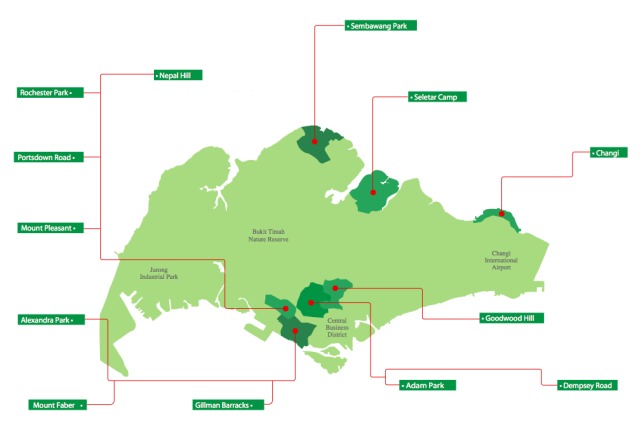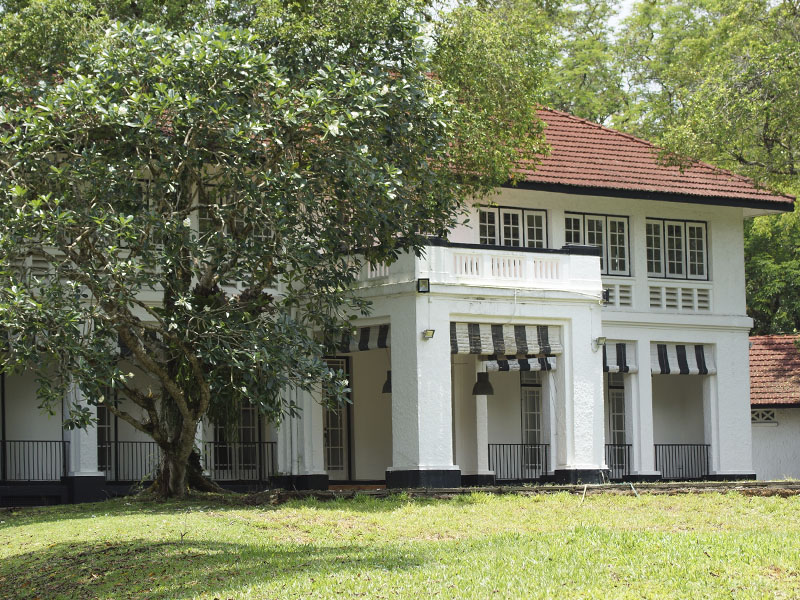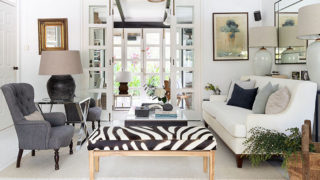If you’re visiting or living in Singapore, the island’s black-and-white houses are a must-see. The beautiful colonial bungalows and terraced homes were built by the British in the period between the early 1900s and World War II. There are around 500 of these buildings still standing in Singapore. Some are rented out for homes, business and restaurants – some are being renovated; sadly, a lot have been empty for years and are overgrown and derelict. Here, we give a quick run down on the neighbourhoods where different black-and-white houses can be found; there’s a map (at the end of the article) to show some of these key areas. There are also some links to readers’ homes we’ve covered over the years.
Did you know? Black-and-whites take their name from the contrast between the dark timbers used in the beams of the houses and their bright whitewashed walls. The dark tone of the wood is a result of it being treated for termites with an oil called creosote.
Black-and-white houses and their neighbourhoods
# Central
Goodwood Hill – large black-and-white bungalows
Goodwood Hill’s bungalows were built by the Public Works Department in 1910. Over time, the houses here have regularly been used for administrative purposes – firstly by the British, then in the second half of the 20th century as a study centre for Singapore’s political and civil service leaders. Many are rented out now as private residences and are in the perfect spot close to Scotts Road.
Did you know? Goodwood Hill boasts some of the oldest black-and-whites in Singapore.
Black-and-white houses and barracks in Dempsey and Ridley Park
When the outbreak of World War II sparked a need for more military accommodation in Singapore, Ridley Park and Ridout Road were two enclaves close to the existing Tanglin Barracks that were developed as married quarters for officers and their families. The actual barracks at Dempsey is now retail and restaurants.
Did you know? Ridley Park is named for Henry Nicholas Ridley, an English botanist who developed the rubber industry in the Malay Peninsula.
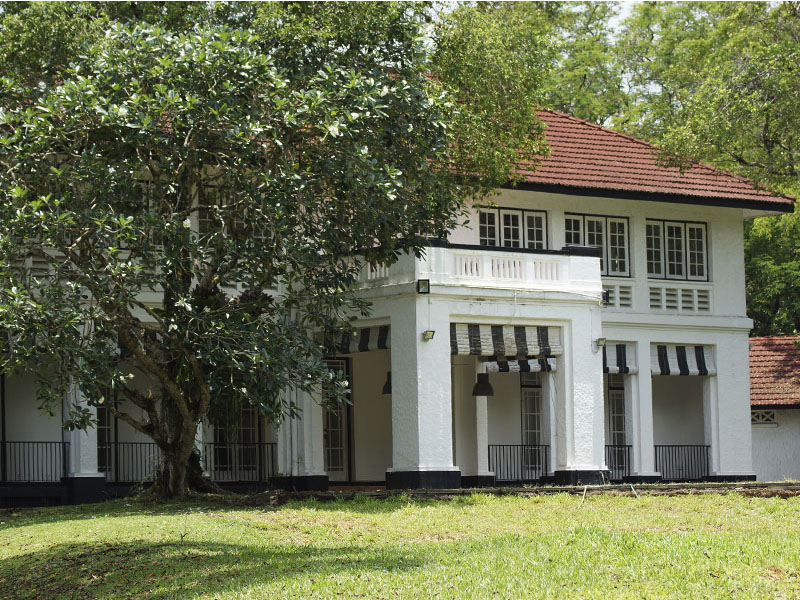
Black-and-white houses in Adam Park
The 19 black-and-white houses here were built in the late 1920s for municipal purposes. They played witness to a fierce three-day battle during World War II (leading to one area being known as “Hellfire Corner”); they then served as a prisoner-of-war camp for defeated Australian and British troops. Over a thousand artefacts have been found in the area to document that period.
Did you know? One of the houses in Adam Park was established by POWs as a chapel.
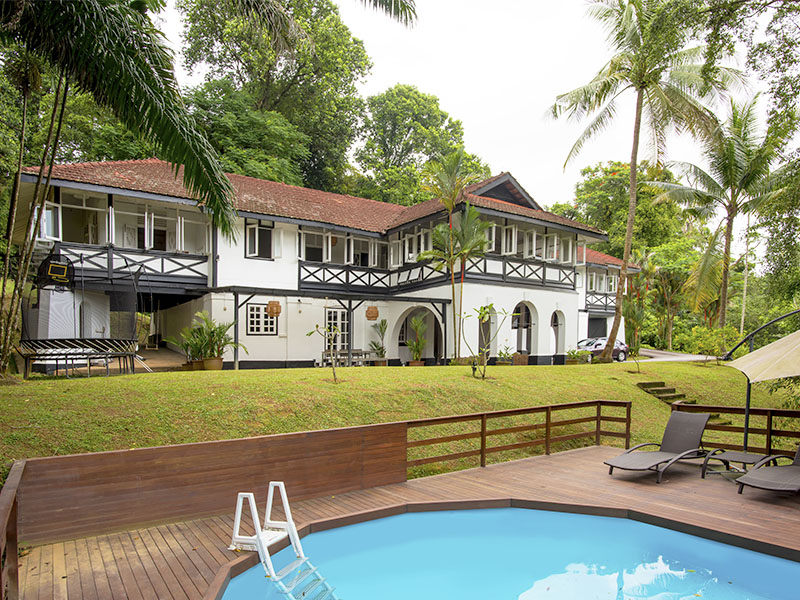
# West
Black-and-white houses and apartments at Wessex Estate
Just off Portsdown Road is a big group of black-and-whites built in the 1930s and 40s. The 70 or so semi-detached houses and walk-up apartments housed British servicemen working at military sites in Alexandra and Pasir Panjang. Today, the estate is known for its collection of art studios and galleries.
Did you know? Roads here are named for English towns and all start with a “W” – Woking, Westbourne, Whitchurch, Weyhill and Wilton.
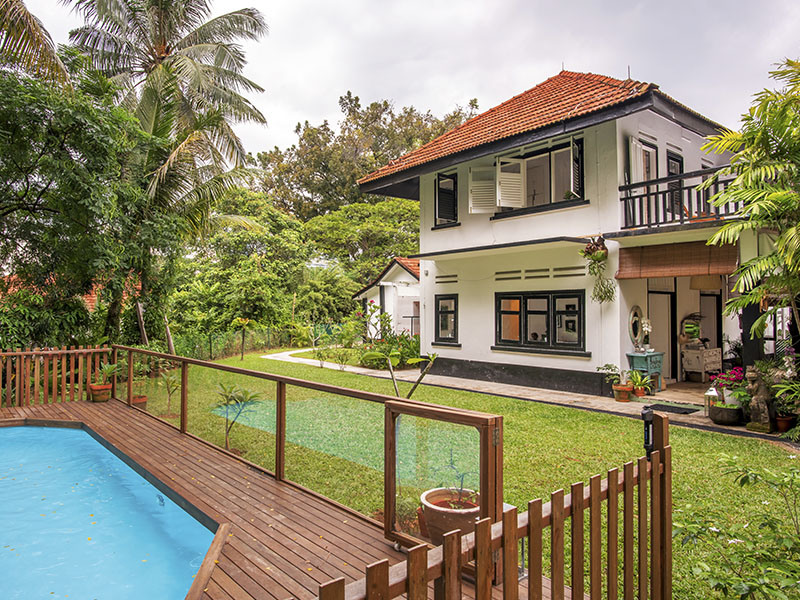
Rochester Park colonial bungalows
There are around 40 black-and-white bungalows in Rochester Park, which were used in the 1940s primarily by British military soldiers stationed at Pasir Panjang Military Complex and their families. Today, several of the buildings operate as bars and restaurants.
Did you know? This area is home to the only Starbucks-occupied black-and-white!
Nepal Hill
A dozen or so black-and-whites can be found at Nepal Hill, a small area just to the southeast of Rochester Park. They were built in the late 1930s for the same purpose, to house British officers and their families.
Did you know? The famous Gurkha regiment of Nepalese recruits led by British officers was stationed at the foot of the hill, hence the name of the area.
Grand black-and-white houses on Mount Pleasant
The cluster of black-and-whites on the north slope of Mount Pleasant are among the grandest in Singapore. Built in the 1930s, they were used as accommodation by high-ranking officers, including senior police from the nearby Police Depot (later Singapore’s Police Academy, until 2005). Some are now run by Ascott as Serviced Residences, and they look amazing.
Did you know? During the war, the estate was a work camp for POWs building the Shinto shrine that’s hidden away in MacRitchie Reservoir even to this day.
# North
Sembawang Park black-and-whites
From 1938, the far north of Singapore was home to a massive British naval base – at the time, the world’s largest dry dock. The sizeable collection of black-and-white houses here were built for the use of senior officers; many sat on elevated land, with balconies to allow for a vantage point back to the base.
Did you know? The roads here take their names from former British colonies and territories: Bermuda, Pakistan, Canberra, Delhi, Sudan and so on.
Seletar Camp
The military camp at Seletar was built in the 1920s and 1930s to house military personnel from nearby Seletar Airbase. As this was formerly the largest British Royal Air Force (RAF) base in the Far East, the area has Singapore’s biggest black-and-white count, with around 200 bungalows still standing. Some of the houses were occupied by the Japanese during the war. Today, they range from two-bedroom semi-detached bungalows to four-bedroom double-storey houses (many now in ruins).
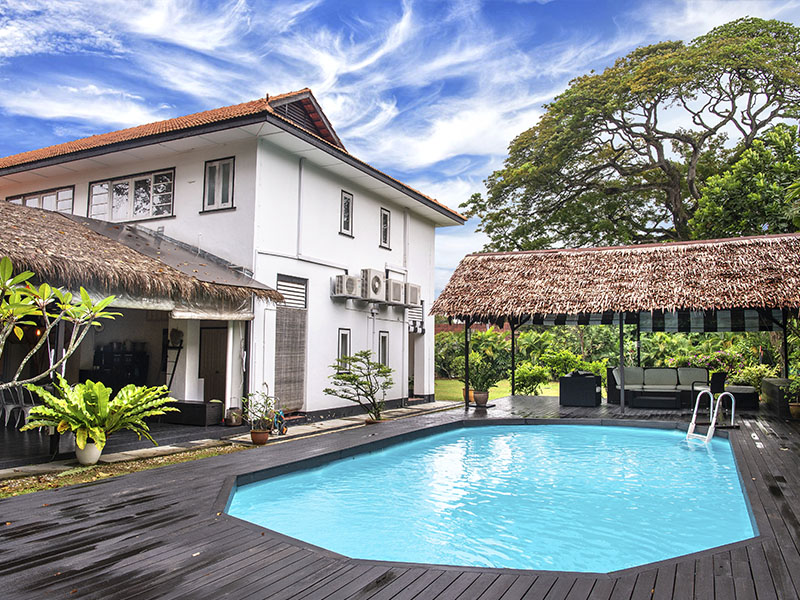
Did you know? There used to be many more than 200 of these homes in this part of Singapore! Over 170 were demolished to make way for the Seletar Aerospace Park in the 2000s. The roads here are named after London Underground stations: Edgeware, Piccadilly, Maida Vale and so on.
# South
Art Deco black-and-white houses at Mount Faber
The small cluster of surviving black-and-whites on the southern slope of Mount Faber was inspired by the Art Deco movement in the 1920s. It was a popular spot for colonial houses as it was quiet, while still being central.
Did you know? Following a recent $1 million refurb of black-and-whites here by the Singapore Land Authority, there are plans to make the area a heritage trail.
Alexandra Park
The earliest black-and-whites were built on this spot to complement the Alexandra Barracks. While some date as far back as 1906, most were erected in the 1930s for senior medical staff of the Royal Army Medical Corps who worked in the Alexandra Military Hospital. These homes are very varied; there are smaller bungalows, Art Deco styles and a massive black and white that was once the officers’ mess.
Did you know: The area takes its name from Princess Alexandra, wife of then Prince of Wales and later King Edward VII.
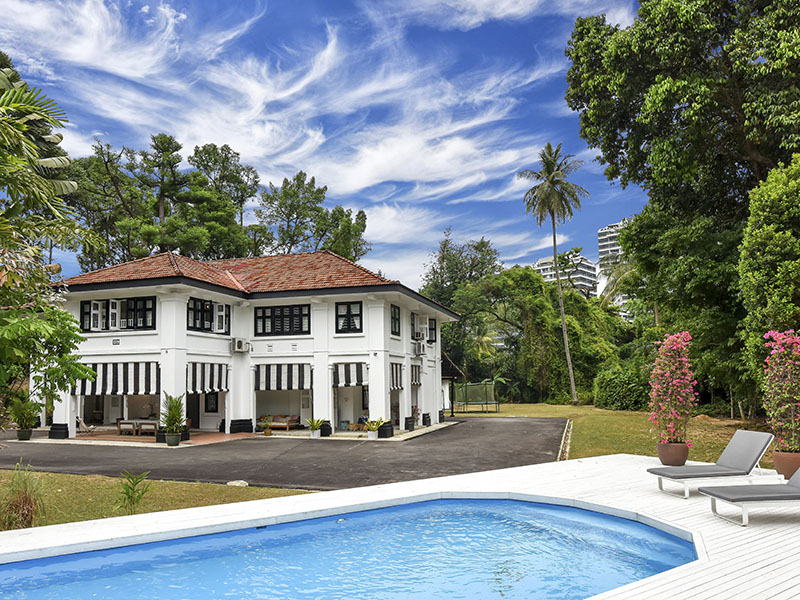
Gillman Barracks
Located just east of the Alexandra Park enclave, and more of an art hub now, the small collection of colonial buildings at Gillman Barracks was built in 1936 for the British infantry. Aside from the barracks, there were black-and-whites that served as married quarters for officers.
Did you know: Gillman was one of the final outposts to fall to the Japanese in World War II.
# East
Black-and-whites at Changi
In 1927, the British general Webb Gillman surveyed Changi as a potential defensive fortress. The area he assessed was a swampy forest, previously used for growing coconuts. Black-and-white houses were built here in the late 1920s and early 1930s as residences for senior British officers – in particular, for the Royal Engineers.
Did you know: In the 1920s, the only way to get to Changi from the city centre was along an unpaved track to Changi Village.
# Other areas
Where else can you find Singapore’s black-and-white houses?
There are other pockets of the island where you’ll find these colonial homes. These include Chip Bee Gardens, Eng Neo Ave, Fort Road, Malcolm Road, Medway Park, Monk’s Hill, Hooper Road, Nassim Road, Seton Close and Woodleigh Park. There are also a couple of privately owned ones on Chancery Road and on the East Coast, while the Botanic Gardens and Fort Canning both have some splendid properties built in the same era that are worth seeing too.
A final word
Even if you’re only in holidaying in Singapore, do try to see a few of these houses. They’re a world away from the skyscrapers and apartment blocks and are usually set in beautiful green areas off the tourist track!
There are some great books on black-and-whites and their heritage and artitecture; here’s one you can buy online.
Read more stories on black-and-white houses in Singapore in our readers’ homes section along with different furniture stores; and see our online guide to neighbourhoods if you’re still deciding where to live in Singapore.
This article first appeared in Expat Living magazine. You can purchase a copy or subscribe so you never miss an issue!

